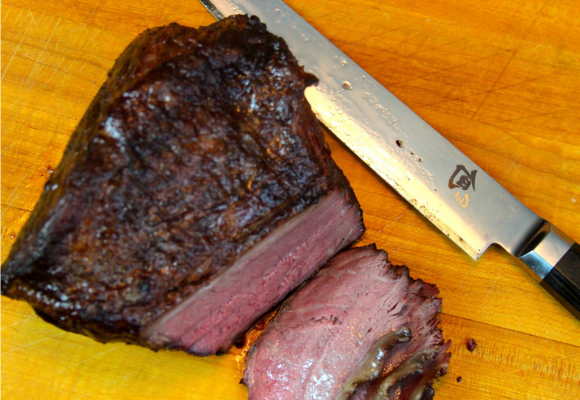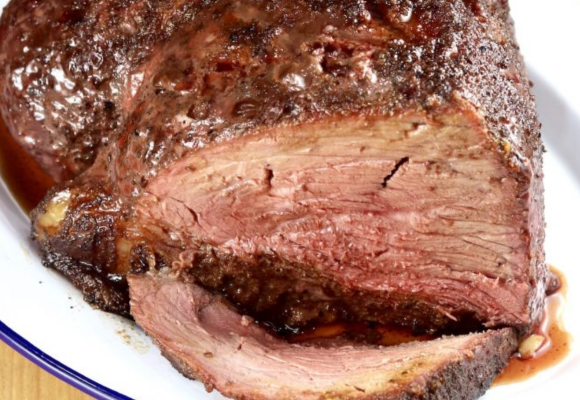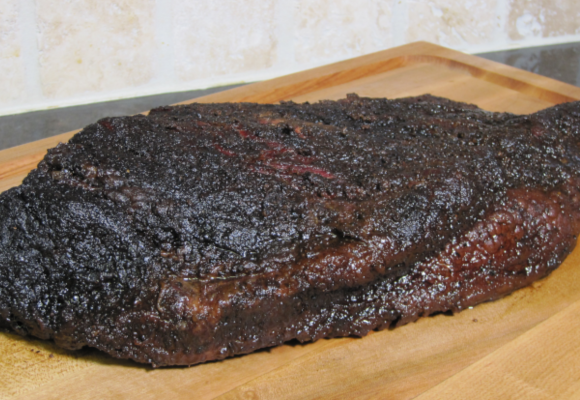When comparing rump roast and bottom round, we delve into the world of beef cuts, exploring their distinct characteristics and culinary uses. Both cuts come from the rear part of the cow, but they offer unique textures, flavors, and cooking methods. The rump roast, from the upper hindquarters, is known for its rich flavor and tenderness, making it a favorite for roasting. On the other hand, the bottom round, cut from the muscular upper leg, is leaner and less tender, often preferred for slow cooking methods like braising. This comparison aims to provide clarity on how each cut enhances different dishes and cooking styles.
Understanding the Cuts

Rump Roast: The rump roast comes from the hindquarters of the cow, specifically the round primal. This area yields meat that is flavorful and moderately tender. Known for its fine grain and rich marbling, the rump roast is a versatile cut that adapts well to various cooking methods.
Bottom Round: Extracted from the rear leg of the cow, the bottom round is a leaner cut compared to the rump roast. It is characterized by its denseness and less marbling. The bottom round is often hailed for its robust beefy flavor, making it a popular choice for dishes that require slow cooking.
Nutritional Value
Both rump roast and bottom round are excellent sources of protein, essential vitamins, and minerals. The rump roast, with its slightly higher fat content, provides a juicier flavor profile. In contrast, the bottom round, being leaner, is a great option for those mindful of fat intake.
Culinary Applications

Rump Roast: The rump roast is a fantastic choice for a classic Sunday roast. Its ability to remain tender and juicy even after long cooking times makes it ideal for oven roasting. It’s also great for pot roasts, where it can absorb the flavors of herbs and spices.
Bottom Round: The bottom round excels in dishes that require slow cooking. It’s the perfect cut for braising, stewing, or slow-cooking in a crockpot. When cooked slowly, the bottom round becomes remarkably tender, making it ideal for shredded beef recipes.
Cooking Techniques
- Roasting: For rump roast, roasting is an excellent way to bring out its flavors. Cook it at a moderate temperature to ensure it remains succulent.
- Braising: The bottom round benefits from braising, a technique that involves cooking slowly in a small amount of liquid. This method helps in breaking down the tough fibers, resulting in a tender and flavorful dish.
Flavor Pairings
Both cuts pair wonderfully with a range of flavors. The rump roast works well with traditional seasonings like rosemary, thyme, and garlic. The bottom round, with its robust flavor, can stand up to heartier accompaniments like red wine, root vegetables, and rich sauces.
Tips for Perfect Cooking
- Rump Roast: Do not overcook. Use a meat thermometer to ensure it reaches the desired doneness.
- Bottom Round: Cook slowly and at a low temperature to achieve the best texture.
What are the Main Differences – Rump Roast versus Bottom Round?
Rump Roast and Bottom Round are both popular cuts from the beef’s hindquarters, but they differ in texture, flavor, and ideal cooking methods.
- Texture & Flavor: The rump roast, from the upper rear of the cow, has a finer grain with more marbling, contributing to a richer flavor and tender texture. The bottom round, coming from the muscular upper leg, is leaner, denser, and has a more pronounced beefy flavor.
- Cooking Suitability: The rump roast is excellent for roasting and slow-cooking methods, maintaining juiciness and tenderness. The bottom round, being leaner, is ideal for low-and-slow cooking methods like braising to tenderize the meat.
How to Cook Rump Roast and Bottom Round?
Rump Roast:
- Roasting: Season the rump roast and cook in a preheated oven at 350°F. Roast until it reaches your desired level of doneness.
- Slow Cooking: For a pot roast, sear the rump roast on all sides, then slow cook with broth and vegetables for several hours until tender.
Bottom Round:
- Braising: Season the roast and sear on high heat. Then, cook it slowly in a covered pot with a small amount of liquid, like broth or wine, and aromatics.
- Slow Cooking: Similar to braising but done in a slow cooker or crockpot over several hours, often with vegetables and a rich sauce or gravy.
What Kind of Cut of Meat Is a Bottom Round Roast?

The Bottom Round Roast is a lean and economical beef cut from the rear leg of the cow. It’s known for its firm texture and strong beef flavor. This cut is less tender than other roasts but becomes very tender when cooked properly, especially with slow, moist cooking methods like braising.
How to Cook a 5-Lb. Round Roast
Cooking a 5-lb. round roast (either rump or bottom round) involves:
- Preparation: Let the roast reach room temperature. Preheat the oven to 325°F.
- Seasoning: Rub the roast with a mix of herbs, salt, and pepper.
- Searing: Sear the roast on all sides in a hot skillet for a caramelized crust.
- Roasting: Place the roast in a roasting pan and cook in the oven. A 5-lb roast typically takes about 2 to 2.5 hours to reach medium-rare.
- Resting: Let the roast rest for 20-30 minutes before slicing.
How To Cook Fillet of Beef
The Fillet of Beef, known for its tenderness and lean profile, is a prized cut. To cook it:
- Seasoning: Season the fillet with salt, pepper, and any preferred herbs.
- Searing: In a hot pan, sear the fillet on all sides to develop a crust.
- Oven Finishing: Transfer to a preheated oven (at around 425°F) and cook to desired doneness, usually 10-15 minutes for medium-rare.
- Resting: Let it rest for about 10 minutes before slicing.
Conclusion
Whether you choose a rump roast or a bottom round, both cuts offer a delightful experience in beef cooking. Each cut has its strengths and best cooking methods, catering to a variety of tastes and preferences. So, the next time you’re planning a meal, consider the versatile and delicious options of rump roast and bottom round. Whichever you choose, you’re in for a treat!

